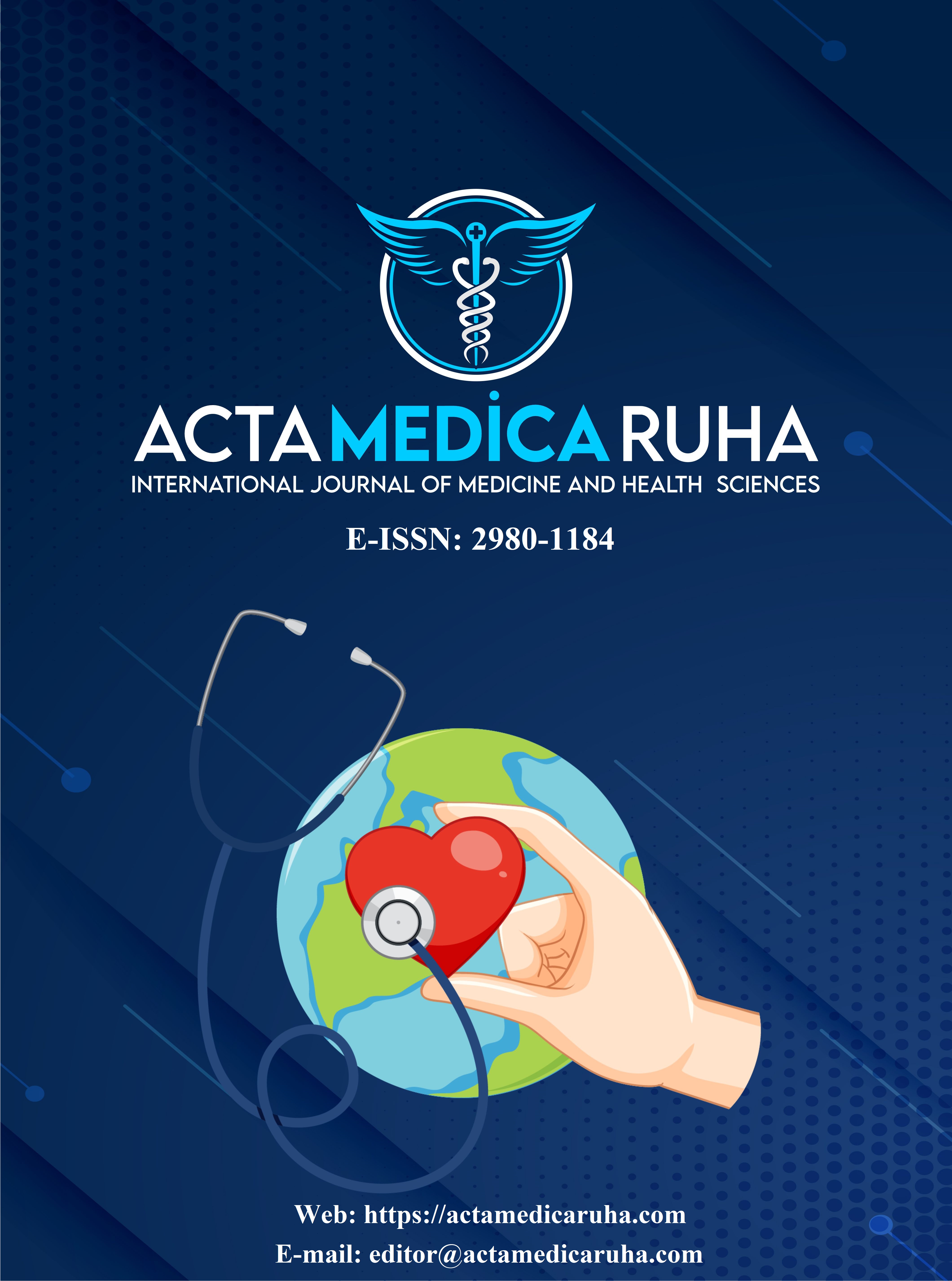Relationship Between Upper Gastrointestinal Tract Bleeding And Seasonal Meteorological Parameters
Research Article
DOI:
https://doi.org/10.5281/zenodo.15689863Anahtar Kelimeler:
Meteorology, Gastrointestinal Bleeding, Peptic UlcerÖzet
Introduction: Determining the relationship between seasons, circadian rhythm and weather has been addressed in many studies since triggering factors may contribute to the incidence of diseases.
Objective: We sought to investigate the association between meteorological factors and the occurrence of peptic ulcer bleeding.
Methods: This study was conducted retrospectively, endoscopic reports, gender, day, month, year and season of admission were recorded in patients with peptic ulcer-related gastrointestinal bleeding. Throughout the study period, data on daily average temperature (°C), daily average atmospheric pressure (mb), daily average relative humidity (%), and maximum wind speed (m/s) were analyzed and compared.
Results: Endoscopy was performed in 176 patients with upper intestinal bleeding. 67% (n=118) of the patients were male. The average age of the patients was 59.87±19.19 years. The highest number of patients was found in winter (n=54, 30.7%) and highest number was found in March (n=20, 11.40%). However, there was no significant variation in proportion of patients admitted across different seasons (p=0.109). In addition, regression analysis revealed that daily meteorological parameters alone had no effect on upper gastrointestinal bleeding due to peptic ulcer.
Conclusion: The highest number of patients was found to be in winter and the lowest in spring. However, while a negative correlation was observed between the number of patient admissions and mean air temperature, this correlation was not statistically significant. There was a positive correlation between daily mean relative humidity and daily mean atmospheric air pressure, but meteorological parameters alone were not effective in the number of patients admitted with gastrointestinal bleeding (GIB).
Referanslar
Hua DT, Pham CD. Clinical guideline highlights for the hospitalist: management of upper gastrointestinal and ulcer bleeding. J Hosp Med. 2021;16:736–737.
Mallah N, Zapata-Cachafeiro M, Aguirre C, et al. A multicenter case-control study of the effect of e-nos VNTR polymorphism on upper gastrointestinal hemorrhage in NSAID users. Sci Rep. 2021;11:19923.
Wilkins T, Wheeler B, Carpenter M. Upper gastrointestinal bleeding in adults: evaluation and management. Am Fam Phys. 2020;101:294–300.
Alruzug IM, Aldarsouny TA, Semaan T, et al. Time trends of causes of upper gastrointestinal bleeding and endoscopic findings. Saudi J Gastroenterol. 2021;27(1):28-34.
Aref S, Abdel-Khalek EE, Abdel-Aal IA, Refaie ME. Circadian pattern of acute variceal bleeding among cirrhotic Egyptian patients. Indian J Hematol Blood Transfus. 2009;25:53–58.
Kanth R, Ittaman S, Rezkalla S. Circadian patterns of ST elevation myo cardial infarction in the new millennium. Clin Med Res. 2013;11:66–72.
Sangkharat K, Mahmood MA, Thornes JE, Fisher PA, Pope FD. Impact of extreme temperatures on ambulance dispatches in London. UK Environ Res. 2020;182:109100.
Zhang Y, Xiang Q, Yu Y, Zhan Z, Hu K, Ding Z. Socio-geographic disparity in cardiorespiratory mortality burden attributable to ambient temperature in the United States. Environ Sci Pollut Res Int. 2019;26(1):694–705.
Royé D, Zarrabeitia MT, Riancho J, Santurtún A. A time series analysis of the relationship between apparent temperature, air pollutants and ischemic stroke in Madrid, Spain. Environ Res. 2019;173:349–358.
Han J, Liu S, Zhang J, et al. The impact of temperature extremes on mortality: a time-series study in Jinan, China. BMJ Open. 2017;7(4):e014741.
Salam A, Kamran S, Bibi R, et al. Meteorological factors and seasonal stroke rates: a four-year comprehensive study. J Stroke Cerebrovasc Dis. 2019; 28:2324–2331.
Prechter F, Bürger M, Lehmann T, Stallmach A, Schmidt C. A study on the correlation of gastrointestinal bleeding and meteorological factors - is there a weather condition for GI bleeding? Z Gastroenterol. 2019; 57:1476–1480.
Yuan XG, Xie C, Chen J, Xie Y, Zhang KH, Lu NH. Seasonal changes in gastric mucosal factors associated with peptic ulcer bleeding. Exp Ther Med. 2015;9(1):125-130.
Modesti PA. Season, temperature and blood pressure: a complex interaction. Eur J Intern Med. 2013;24(7):604–607.
Hozawa A, Kuriyama S, Shimazu T, Ohmori-Matsuda K, Tsuji I. Seasonal variation in home blood pressure measurements and relation to outside temperature in Japan. Clin Exp Hypertens. 2011;33(3):153–158.
Radke KJ, Izzo JJ. Seasonal variation in haemodynamics and blood pressure-regulating hormones. J Hum Hypertens. 2010;24(6):410–416.
Dhar AK, Lambert GW. Seasonal changes in blood pressure: possible interaction between sunlight and brain serotonin. Hypertension. 2013;62(1):1.
Xue Y, Zhou LY, Lu HP, Liu JZ. Recurrence of Helicobacter pylori infection: incidence and influential factors. Chin Med J. 2019;132:765–771.
Yuan Y, Wang RJ, Liu Z, Gao YX, Liu XJ, Hao JY. Unique meteorological characteristics in the upper gastrointestinal bleeding by different etiologies in Beijing Area, China. Chin Med J (Engl). 2020;134(6):746-748.
Boulay F, Berthier F, Dahan MDC, Tran A. Seasonal variations in variceal bleeding mortality and hospitalization in France. Am J Gastroenterol. 2001;96(6):1881–1887.
Guo CG, Tian L, Zhang F, Cheung KS, Leung WK. Associations of seasonal variations and meteorological parameters with incidences of upper and lower gastrointestinal bleeding. J Gastroenterol Hepatol. 2021;36(12):3354-3362.
İndir
Yayınlanmış
Nasıl Atıf Yapılır
Sayı
Bölüm
Lisans
Telif Hakkı (c) 2025 Acta Medica Ruha

Bu çalışma Creative Commons Attribution 4.0 International License ile lisanslanmıştır.











